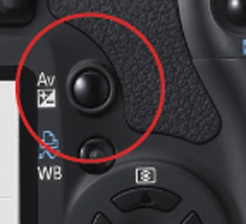Using Exposure Compensation to Over- or Underexpose
Now that you've seen some of the occasions when you might want to over- or underexpose, we'll look at one of the ways that you can tell the camera to make such an exposure adjustment. There are many ways of controlling exposure on the XS, but the easiest method is to use exposure compensation.
These days, almost all cameras have an Exposure Compensation control, which simply lets you make a relative exposure change. That is, you can tell the camera, "I don't care how you metered the scene; I just want you to go up from there by 1 stop." Try using exposure compensation now:
Frame a shot.
Press the shutter button down halfway to meter your scene (the camera will also autofocus and take a white balance reading).
After the camera beeps, the viewfinder and status LCD will show you the shutter speed and aperture settings that it has calculated.
Take the shot.
Now frame the same shot, and again press the shutter button halfway down to meter the scene.
Using your thumb, press the Exposure Compensation button on the back of the camera.

Figure 7-8. Dial in a specific amount of over- or underexposure.
Rotating the Main dial Exposure Compensation display in the viewfinder indicates a one-stop overexposure. (If you haven't changed the camera's defaults, then this will be three clicks on the dial.)
Take the shot.
Figure 7-9. The Exposure Compensation ...
Get The Canon EOS Digital Rebel XS/1000D Companion now with the O’Reilly learning platform.
O’Reilly members experience books, live events, courses curated by job role, and more from O’Reilly and nearly 200 top publishers.

